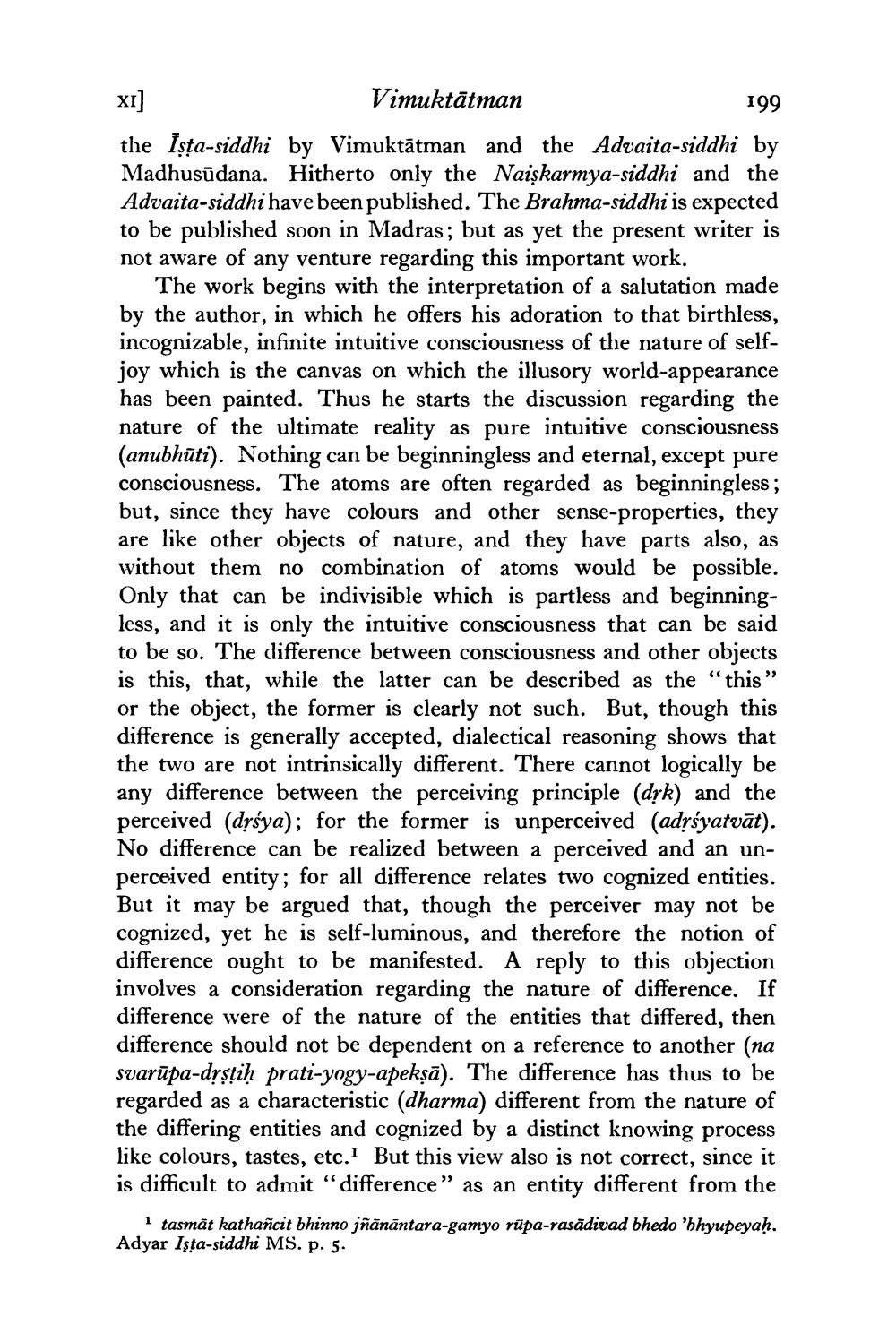________________
Vimuktātman
199
the Ista-siddhi by Vimuktātman and the Advaita-siddhi by Madhusūdana. Hitherto only the Naişkarmya-siddhi and the Advaita-siddhi have been published. The Brahma-siddhi is expected to be published soon in Madras; but as yet the present writer is not aware of any venture regarding this important work.
The work begins with the interpretation of a salutation made by the author, in which he offers his adoration to that birthless, incognizable, infinite intuitive consciousness of the nature of selfjoy which is the canvas on which the illusory world-appearance has been painted. Thus he starts the discussion regarding the nature of the ultimate reality as pure intuitive consciousness (anubhūti). Nothing can be beginningless and eternal, except pure consciousness. The atoms are often regarded as beginningless; but, since they have colours and other sense-properties, they are like other objects of nature, and they have parts also, as without them no combination of atoms would be possible. Only that can be indivisible which is partless and beginningless, and it is only the intuitive consciousness that can be said to be so. The difference between consciousness and other objects is this, that, while the latter can be described as the "this" or the object, the former is clearly not such. But, though this difference is generally accepted, dialectical reasoning shows that the two are not intrinsically different. There cannot logically be any difference between the perceiving principle (drk) and the perceived (drśya); for the former is unperceived (adrśyatvāt). No difference can be realized between a perceived and an unperceived entity; for all difference relates two cognized entities. But it may be argued that, though the perceiver may not be cognized, yet he is self-luminous, and therefore the notion of difference ought to be manifested. A reply to this objection involves a consideration regarding the nature of difference. If difference were of the nature of the entities that differed, then difference should not be dependent on a reference to another (na svarūpa-drsțiḥ prati-yogy-apeksā). The difference has thus to be regarded as a characteristic (dharma) different from the nature of the differing entities and cognized by a distinct knowing process like colours, tastes, etc. But this view also is not correct, since it is difficult to admit “difference" as an entity different from the
1 tasmāt kathancit bhinno jñānāntara-gamyo rüpa-rasādivad bhedo 'bhyupeyah. Adyar Işta-siddhi MS. p. 5.




